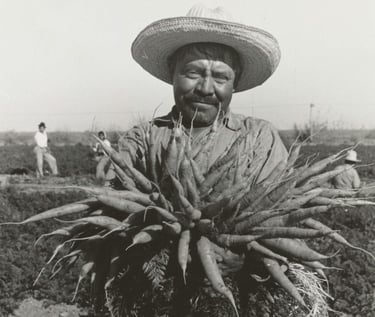Billionaires and Strawberries: The Real Villains in America's Fruit Basket
Have you ever stopped to think about the stories we hear about who the real villains are in the agricultural world?
IMMIGRATIONECONOMICS


Understanding the Narrative
Have you ever stopped to think about the stories we hear about who the real villains are in the agricultural world? For many Americans, the image of billionaires swaying in their private jets overshadow the daily lives of those who work tirelessly in the fields, picking strawberries and other fruits. Yet, somehow, these workers have been painted as the undeserving ones, the villains in a narrative spun by those at the top.
The Power of Perception
The narrative around who is to blame for various societal issues has often been crafted by those with considerable wealth and influence. It's crucial to understand how these billionaires portray the hardworking individuals laboring under the sun to make their profits. Through opportunistic marketing campaigns, stories that emphasize the 'immorality' of the labor force often distract from the exploitative practices in our food production system. This has led many to unfairly view the laborers as the ones causing the problem, rather than the very structure that governs their lives.
Who Benefits from Blame?
By shifting the blame onto the workers, billionaires and corporations avoid accountability for creating conditions that foster economic disparity and mistreatment. Why is it that the people who provide us with sustenance—like those strawberry pickers—suffer while wealth accumulates in the hands of a few? This manipulation of public perception benefits the wealthiest. It allows them to sidestep scrutiny while keeping the focus on the 'issues' that they help stir up.
The workers, often migrant laborers, are painted as the threat, despite their contributions being essential for feeding the nation. The sad irony is that these hard-working individuals often face dire conditions, low wages, and dangerous environments without receiving the recognition or gratitude they deserve.
Reframing the Conversation
If we want to challenge the narrative handed to us by billionaires, we need to educate ourselves about the real dynamics at play. Understanding the struggles of agricultural workers can empower us to advocate for fair labor practices. We need to elevate the voices of strawberry pickers and other essential workers, allowing their stories to shine a light on the systemic issues at play. Rather than vilifying them, we should be calling out the systems and practices that allow billionaires to profit off the backs of these laborers, often while being shielded from public criticism.
It’s time to recognize that the real villains aren’t the ones picking strawberries but rather the overarching systems that allow the wealthy to exploit hard work for profit. By doing so, we can start to revolutionize the way we view labor, wealth, and ultimately, the real narrative surrounding who is really responsible for the inequalities we face today.